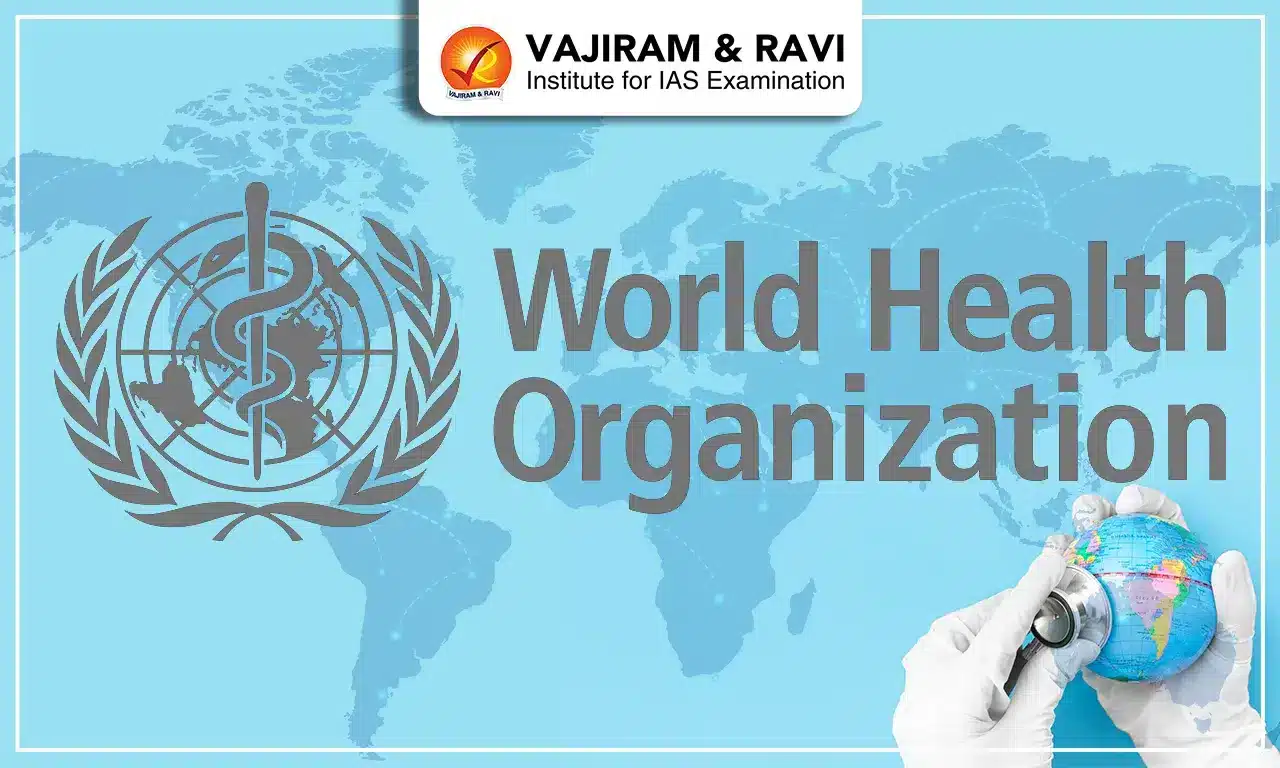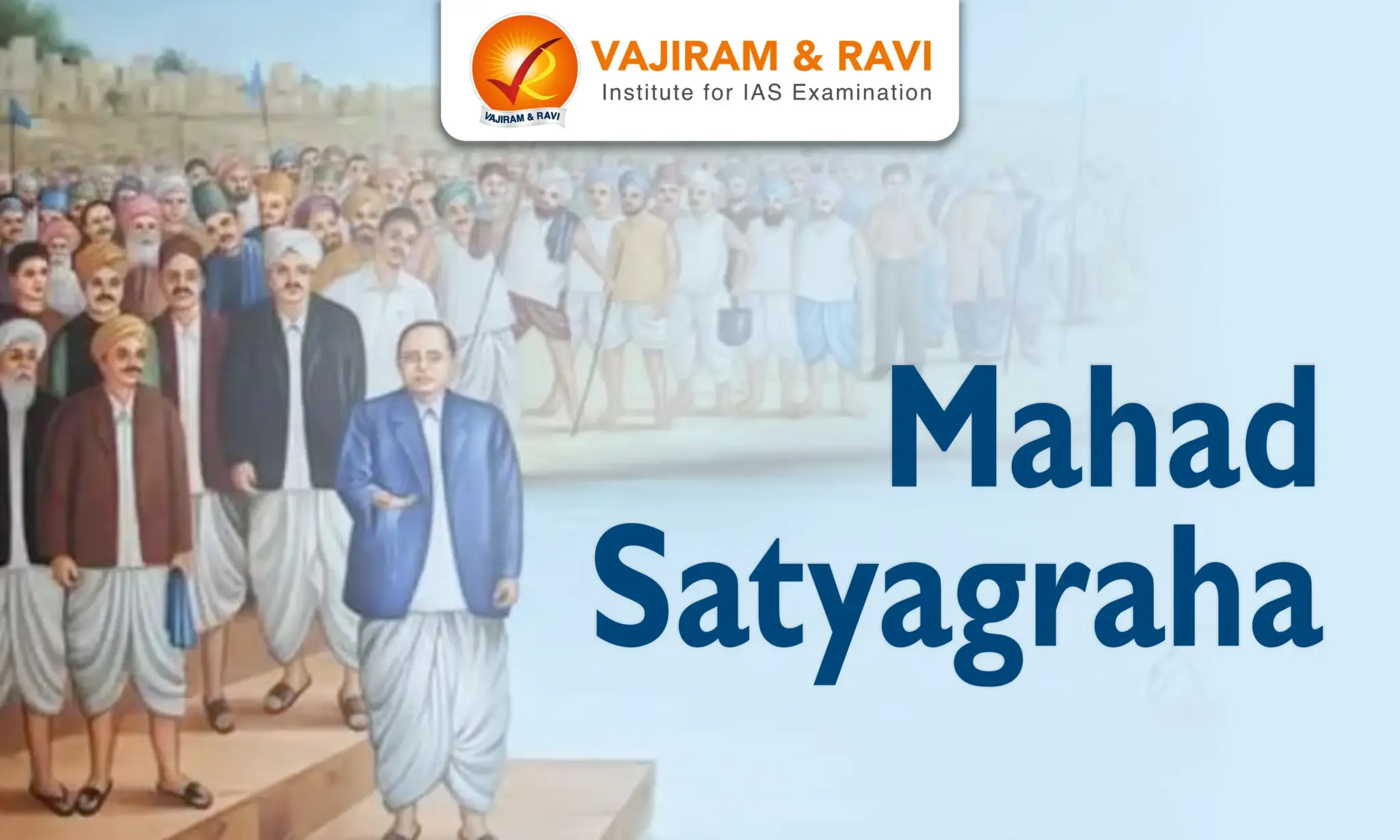The World Health Organisation (WHO), established in 1948 as a specialised agency of the United Nations, serves as the global authority on public health, connecting nations, partners, and people to promote health, ensure safety, and support the vulnerable. Headquartered in Geneva with six regional offices worldwide, WHO leads international efforts in disease prevention, control, and elimination while setting global health standards and providing technical assistance to member states.
Its key achievements include eradicating smallpox, reducing polio cases, and strengthening health systems, especially in low- and middle-income countries. Despite challenges such as limited funding, political influence, and transparency concerns, the WHO remains indispensable in addressing global health crises, advancing universal health coverage, and preparing for future pandemics.
World Health Organisation (WHO) History
The World Health Organisation (WHO), established in 1948, is a specialised agency of the United Nations (UN) that connects nations, partners and people to promote health, keep the world safe and serve the vulnerable, so everyone, everywhere can attain the highest level of health. Its history can be traced as below.
- In 1945, soon after the end of World War 2, the United Nations Conference on International Organisations held in San Francisco decided to create a new international health body. A year later, the International Health Conference in New York adopted the Constitution of the World Health Organisation (WHO).
- From 1946 to 1948, an Interim Commission comprising 18 member states assumed the responsibilities of L’Office International d’Hygiène Publique, the Health Organisation of the League of Nations, and the Health Division of the UN Relief and Rehabilitation Administration.
- In 1948, the WHO Constitution received the required number of ratifications to come into effect.
- The First World Health Assembly met in Geneva in the summer of 1948 and established as priorities for the organisation: malaria, tuberculosis, venereal diseases, maternal and child health, sanitary engineering, and nutrition.
- In 1948, the WHO had a budget of US$5 million at its disposal.
- Additionally, the Organisation undertook extensive disease prevention and control initiatives, launching large-scale campaigns against yaws, endemic syphilis, leprosy, and trachoma.
World Health Organisation (WHO) Objectives
Some of the important objectives of WHO are:
- Lead global efforts to expand universal health coverage.
- Emphasise activities aimed at disease prevention, control, and elimination, along with the promotion of overall health and well-being.
- Provide leadership on global health issues, set standards for public health, and provide technical assistance and support to countries.
- Collaborate with various partners, including other UN agencies, governments, civil society organisations, and the private sector.
WHO Working
The WHO's working is designed to support the implementation of its mandate and the achievement of its objectives. It includes:
- Membership: WHO currently has 194 member states.
- Headquarters: Geneva, Switzerland.
- World Health Assembly (WHA): It serves as the supreme decision-making body of the WHO and includes representatives from all member states.
- Secretariat: Responsible for carrying out the policies and programs approved by the WHA.
- Director-General: The Director-General heads the WHA and is supported by a senior management team.
- Regional Offices: The WHO is further supported by six regional offices located in Africa, the Americas, Southeast Asia, Europe, the Eastern Mediterranean, and the Western Pacific.
- Each regional office is responsible for coordinating and supporting the WHO's work in its respective region.
- Meetings: The WHA meets annually to set policies, approve the budget and elect the Director-General.
- Funding mechanism: The WHO gets its funding from two main sources:
- Assessed contributions: These are the dues countries pay to be a member of the Organisation.
- Voluntary contributions: It is from Member States (in addition to their assessed contribution) or from other partners like United Nations organisations, intergovernmental organisations, philanthropic foundations, the private sector, etc.
World Health Organisation Functions
Key functions of the World Health Organisation (WHO) in global health governance:
- Setting global health standards and guidelines: The WHO help to build and ensure that medicines, vaccines, and even food products meet global safety and quality standards.
- Monitoring and assessing global health trends: The WHO issues regular updates on emerging health threats and disease outbreaks to assist countries in preparedness and response efforts.
- Coordinating international health responses: The WHO work with governments, other UN agencies, and international partners to coordinate global health responses to epidemics, disasters, and other health emergencies.
- Building health systems: The WHO assists countries in enhancing their health systems by improving access to essential medicines, training healthcare professionals, and developing robust health infrastructure.
- Conducting research and development: The WHO conducts and promotes research into global health issues, with a focus on finding solutions to health challenges affecting low- and middle-income countries
- Advocating for better health policies and funding: The WHO advocates for policies and funding that prioritise global health issues and ensure that health is a central component of development agendas.
- Providing technical assistance and capacity building: The WHO provides technical assistance and capacity building to countries to help them develop and implement effective health policies and programs.
WHO Role in Public Health
The WHO has significantly contributed to improving global health over the past several decades. Some of its notable achievements include,
- Disease eradication:
- Smallpox: The WHO led the global campaign to eradicate smallpox, which was declared eradicated in 1980.
- Polio: WHO has been a key partner in the Global Polio Eradication Initiative, which has led to a 99% reduction in polio cases worldwide.
- Control of communicable diseases: Like malaria, tuberculosis, HIV/AIDS, etc., through the development and promotion of evidence-based strategies and interventions.
- Health Systems Strengthening: The WHO plays an active role in strengthening health systems across low- and middle-income countries.
- Example: ‘The WHO India Country Cooperation Strategy 2019–2023: A Time of Transition’ provides a strategic roadmap for the WHO to work with India towards achieving its health sector goals.
- Essential medicines: It works to ensure access to essential medicines for all by guiding the selection, procurement, and use of essential medicines.
- Nutrition improvement: It strives to enhance global nutrition by offering guidance and support to countries in formulating and implementing national nutrition policies and programmes.
- Emergencies and disasters: It provides technical guidance and support to countries and coordinates the international response during emergencies and disasters.
- Examine: WHO provided timely updates and assistance during the COVID-19 pandemic.
- Mental health: It works to promote mental health and well-being and prevent and treat mental disorders by providing guidance and support to countries.
- WHO’s Comprehensive Mental Health Action Plan 2013-2020
- Digital Health: It assists countries in harnessing digital technologies to enhance health outcomes.
WHO Role in India
India and the WHO have a cooperative partnership in several areas of public health. Some of these areas are:
- Disease Control and Prevention: The WHO partners in implementing various disease control and prevention initiatives, such as the National Programme for Tuberculosis Control, the National Strategic Plan for Malaria Elimination (2023–2027), and the National Programme for HIV/AIDS Control.
- WHO collaborated with Jammu and Kashmir in 2021 to identify challenges that have led to vaccine hesitancy (COVID-19) and conduct special vaccination drives to increase vaccination coverage
- Maternal and Child Health: Providing technical assistance and support to help reduce maternal and child mortality.
- Non-Communicable Diseases: The WHO collaborates with India to prevent and manage non-communicable diseases such as diabetes, cancer, and cardiovascular disorders, among others.
- Traditional Medicine: WHO is working with India to promote the safe and effective use of traditional medicine.
- Example: WHO signed an agreement with the government of India to establish the WHO Global Centre for Traditional Medicine in Jamnagar, Gujarat.
- Health Research: WHO and India have a strong partnership in the area of health research.
- Digital Health: WHO is working with India to leverage the power of digital technologies to improve health outcomes.
- Example: Through its work on national digital health strategies, the WHO has served as a global reference point and provided support in developing India’s National Digital Health Blueprint.
World Health Organisation Issues and Challenges
The WHO faces several difficulties in its working and organisational structure. Some of these challenges include:
- Limited funding: The WHO depends largely on voluntary contributions from member states and other donors, which are often unpredictable and inadequate to fully support its programmes.
- Emergence of new diseases: The WHO must constantly monitor and respond to new and emerging diseases, such as COVID-19, which can strain its resources and capabilities.
- Limited access to healthcare: Many countries still lack adequate healthcare infrastructure and resources, which makes it difficult for the WHO to improve health outcomes in these areas.
- Climate Change and Health: Climate change is increasingly affecting health, and the WHO faces the challenge of dealing with the health consequences of extreme weather events and the health effects of air and water pollution.
WHO Criticism
In the past few years, the WHO has been criticised for its functioning, transparency and its politicisation.
- Inefficiency and bureaucracy: The WHO is slow to respond to health crises due to its bureaucratic structure and lack of resources.
- Example: During the 2014-16 Ebola outbreak in West Africa, the WHO was criticised for a delayed response and an underestimation of the outbreak.
- Political interference: Recent trends in its governance have shown that the WHO is vulnerable to political interference.
- Example: China’s alleged influence over the WHO came to light during the COVID-19 pandemic.
- Lack of transparency: The WHO has faced criticism for insufficient transparency in its decision-making processes and operations.
- Example: WHO's handling of the COVID-19 pandemic and for not being forthcoming about the origins of the virus.
- Inadequate representation: It has been alleged that the WHO fails to sufficiently represent the interests of all member states, especially those of developing nations.
World Health Organisation (WHO) Way Forward
The WHO is an essential organisation that plays a key role in tackling global health challenges. To enhance its effectiveness, several measures can be considered, such as:
-
- Increased funding: The WHO's budget needs to be increased to ensure it has the necessary resources to address global health challenges effectively.
- There is a need to ensure that extra budgetary or voluntary contributions are unearmarked to ensure that the WHO has the necessary flexibility in its usage.
- Ensuring transparency: Member States should be involved in discussions on budget implementation and spending.
- Establish transparency with respect to data reporting and disbursement of funds for increased accountability.
- Strengthening leadership and governance: To enhance transparency, accountability, and effectiveness. This could include increasing the representation of low- and middle-income countries in decision-making bodies.
- Improved focus on prevention and preparedness: The WHO should place greater emphasis on prevention and preparedness for outbreaks and pandemics, rather than merely responding after crises arise.
- It can start by strengthening the Public Health Emergency of International Concern (PHEIC) declaration process.
- Increased funding: The WHO's budget needs to be increased to ensure it has the necessary resources to address global health challenges effectively.
- Creation of Global Framework for Management of Infectious Diseases & Pandemics: To include enhancement of capacities of countries in response to infectious diseases, including guidance on effective public health and health emergencies
- A global surveillance system utilising advanced ICT tools should be developed.
WHO UPSC PYQs
Question 1: Critically examine the role of WHO in providing global health security during the Covid-19 pandemic. (UPSC Mains 2020).
Last updated on November, 2025
→ Check out the latest UPSC Syllabus 2026 here.
→ Join Vajiram & Ravi’s Interview Guidance Programme for expert help to crack your final UPSC stage.
→ UPSC Mains Result 2025 is now out.
→ UPSC Notification 2026 is scheduled to be released on January 14, 2026.
→ UPSC Calendar 2026 is released on 15th May, 2025.
→ The UPSC Vacancy 2025 were released 1129, out of which 979 were for UPSC CSE and remaining 150 are for UPSC IFoS.
→ UPSC Prelims 2026 will be conducted on 24th May, 2026 & UPSC Mains 2026 will be conducted on 21st August 2026.
→ The UPSC Selection Process is of 3 stages-Prelims, Mains and Interview.
→ UPSC Result 2024 is released with latest UPSC Marksheet 2024. Check Now!
→ UPSC Prelims Result 2025 is out now for the CSE held on 25 May 2025.
→ UPSC Toppers List 2024 is released now. Shakti Dubey is UPSC AIR 1 2024 Topper.
→ UPSC Prelims Question Paper 2025 and Unofficial Prelims Answer Key 2025 are available now.
→ UPSC Mains Question Paper 2025 is out for Essay, GS 1, 2, 3 & GS 4.
→ UPSC Mains Indian Language Question Paper 2025 is now out.
→ UPSC Mains Optional Question Paper 2025 is now out.
→ Also check Best IAS Coaching in Delhi
World Health Organisation FAQs
Q1. What is the WHO and what is its role?+
Q2. What are the 5 functions of the WHO?+
Q3. Is India a member of the WHO?+
Q4. Where is the headquarters of the WHO?+
Q5. How is WHO funded?+

















